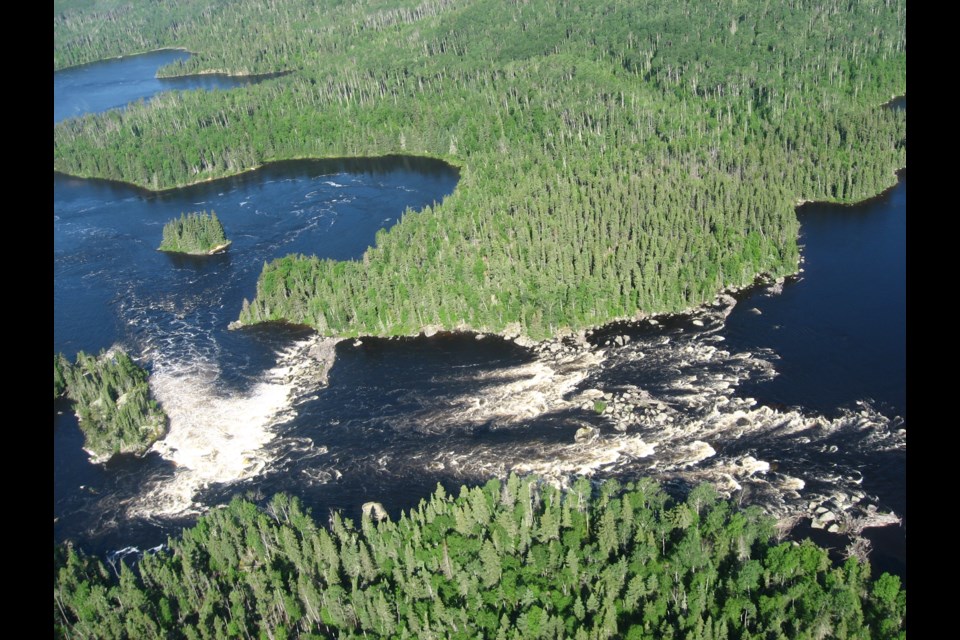THUNDER BAY — Ontario Power Generation wants to resurrect a decades-old proposal for a hydro power project north of Lake Nipigon.
OPG is recommending to the government that it proceed to develop the Little Jackfish project in order to help meet Ontario's future need for cleaner energy and the ultimate goal of net-zero emissions.
The recommendation comes in the Northern Ontario Hydroelectric Opportunities Report, made public this week.
Delivered to Energy Minister Todd Smith last year, the report states that the province needs to move immediately to develop untapped hydro power in order to meet a projected 40 per cent increase in demand by 2040.
A combination of factors will drive this, including electric vehicles, economic growth, and population growth in southern Ontario.
"Without increased electricity supply, Ontario will need to determine how much it relies on imports from neighbouring jurisdictions to meet its growing clean energy needs ... Other jurisdictions are seeing the same impacts. As a result the ability to rely on neighbouring power supply no longer exists," OPG's report states.
The project on the Little Jackfish River would be relatively small compared with some other hydro dams, with a capacity of 80 megawatts but its output would still be three times larger than that of the Kakabeka Falls Generating Station.
In 2010 and 2011, OPG held public meetings where it said the moment had arrived for developing the river's potential.
"I think the stars are aligning in terms of the move to green energy in the province, also the interest of the First Nations communities around the lake in working with us," said project manager Murray Paterson. "I think the time is right for the project now."
Several First Nations in the area had signed a statement signifying their interest in the plan on the basis of its economic benefits including associated green energy projects of their own.
But OPG deferred further work on the project in 2015 due to a lack of energy demand, but now says forecasted needs have shifted substantially.
Eight years later, the new report still describes Little Jackfish as the most advanced medium-scale hydroelectric project anywhere in Northern Ontario.
"Significant investment of time and resources has been made towards completing the environmental assessment process, as well as a shared equity partnership between OPG and six Lake Nipigon First Nations," it says.
The report also notes that the Independent Electricity System Operator has indicated that the existing transmission system infrastructure would not require reinforcing for this project.
Little Jackfish is the hydro project 'closest to being shovel-ready'
Neal Kelly, director of media for OPG, told TBnewswatch the completion of the East-West Tie transmission line from Wawa to Thunder Bay last year has created a means of sending power from the Little Jackfish site to other parts of the province.
"There's a real opportunity here. We have a long way to go but Jackfish is the project that's closest to being shovel-ready," Kelly said in an interview Wednesday.
Building generating stations and transmitting the power to where it's needed can be extremely costly, but the OPG report puts a lot of emphasis on the durability of hydro dams and their economic spin-offs.
"Our hydro facilities in the north have been around for decades and decades and decades. Many are over 100 years old. They'll be around a long time," Kelly said. "You're basically running water through generators, putting it back in the basin. Hydro power is around for a long, long time once you have it."
The report also asserts that 75 cents out of every dollar spent on construction would be spent in Ontario, compared with only 50 cents for solar projects and 30 cents for wind technologies.
With specific reference to the Little Jackfish proposal, it notes that the Chiefs of the Lake Nipigon-area First Nations "have highlighted the importance of a path forward on the revenue mechanism to underpin the project economics," and states that their participation will "add value to its design and implementation through broad regional commercial participation and other benefits."
OPG has identified the potential for new hydroelectric developments farther north as well, including a pocket of sites on the Upper Albany and Attawapiskat Rivers, close to the Ring of Fire mineral zone and along a proposed northern access link road.
The report suggests that new dams "can be an enabler" of other economic activities including new mines.
In total, OPG estimates the untapped hydroelectric potential across Northern Ontario is 3,000 to 4,000 MW.
The utility's existing 66 hydroelectric facilities produce nearly 7,500 MW, amounting to about one-third of OPG's total production which also includes nuclear power.
